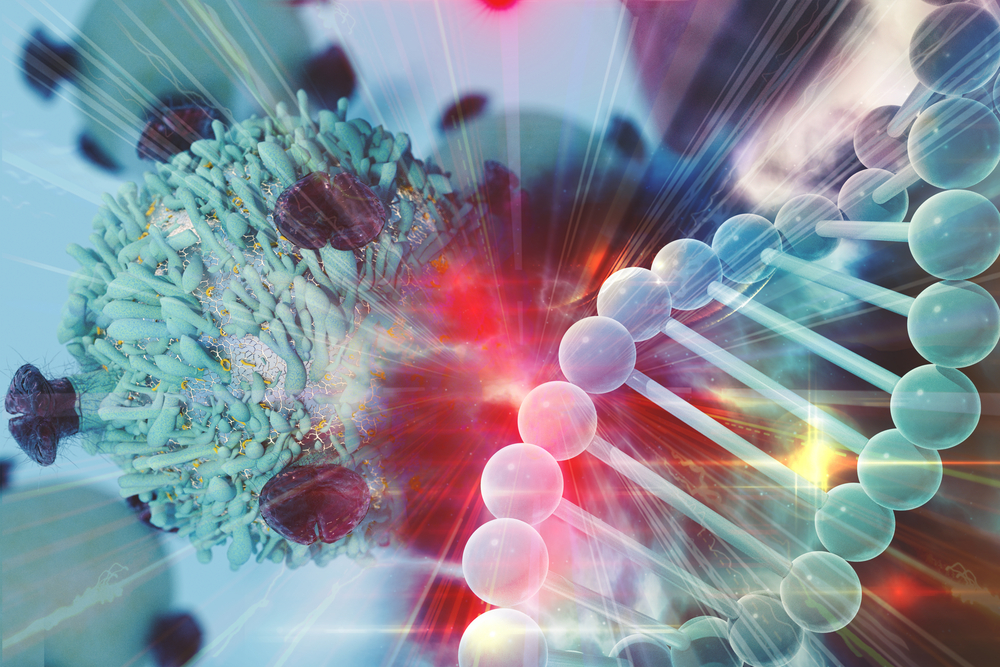Understanding aHUS-linked Changes in Large Gene Cluster May Help in Diagnosis and Treatment, Review Says

Understanding the disease-related alterations in a large gene cluster that lead to atypical hemolytic uremic syndrome (aHUS) may help in diagnosing and treating the illness, a recent review suggests.
The study, “CFHR Gene Variations Provide Insights in the Pathogenesis of the Kidney Diseases Atypical Hemolytic Uremic Syndrome and C3 Glomerulopathy,” was published in the Journal of the American Society of Nephrology.
aHUS is characterized by the progressive destruction of red blood cells due to the dysregulation of the complement system — a set of more than 20 blood proteins that form part of the body’s immune defenses. The disease can be caused by different types of mutations in genes coding for complement regulator proteins.
This review focused on summarizing the different types of mutations in a large gene cluster of five CFHR genes and the complement factor H gene (CFH) that have been associated with aHUS.
CFHR is composed of five genes — CFHR1, CFHR2, CFHR3, CFHR4, and CFHR5 — that are clustered together with complement factor H gene on chromosome 1, and are involved in the regulation of the complement system. Each CFHR gene provides instructions to make complement factor H-related (FHR) proteins that modulate the activity of the complement regulators factor H and FHL1.
Mutations and chromosomal rearrangements in genes that are part of this cluster have been associated with a series of disorders, including kidney disease, aHUS, and C3 glomerulopathy.
In the case of aHUS, studies have implicated gene alterations in CFHR1, CFHR3, and factor H. These alterations can affect one or several CFHR genes at the same time, and/or in combination with factor H.
So far, four main categories of gene alterations involving these three genes have been reported: two involving the deletion of a portion of the DNA sequence between the coding sequence of factor H and CFHR3 or CFHR1; another involving the duplication of CFHR1; and the last one involving the deletion of both CFHR1 and CFHR3 gene sequences from the cluster.
Of note, the coding sequence of a gene refers to the portion of the gene’s DNA sequence that provides instructions to make a protein.
When deletions take place in between the coding sequences of factor H and CFHR3 or CFHR1, hybrid fusion proteins of factor H, FHR3, and FHR1 are made. These abnormal proteins lead to the dysregulation in the levels of several complement regulators and modulators in the blood, including FHR1, FHR3, and factor H.
In the case of patients carrying a duplication of CFHR1, the levels of FHR3 in the blood increase substantially, because the duplication of CFHR1 also introduces a second coding sequence for CFHR3 in the gene cluster.
The last scenario, in which the CFHR1 and CFHR3 gene sequences are both lost, has been reported in approximately 15% of young patients with aHUS and is frequently associated with the production of harmful autoantibodies that target and bind to factor H.
“These genetic modifications influence complement function and the interplay of the five FHR proteins with each other and with Factor H. Understanding how mutant or hybrid FHR proteins, … and altered Factor H, FHR plasma profiles cause pathology [disease] is of high interest for diagnosis and therapy,” the researchers wrote.
They recommended a strong interdisciplinary approach that includes geneticists, complement system experts, kidney specialists, and clinicians to establish precise diagnostic and prognostic parameters for the FHR-associated disorders.
“Advanced understanding of the disease mechanisms will guide physicians and patients through this complex disease spectrum,” they said.






